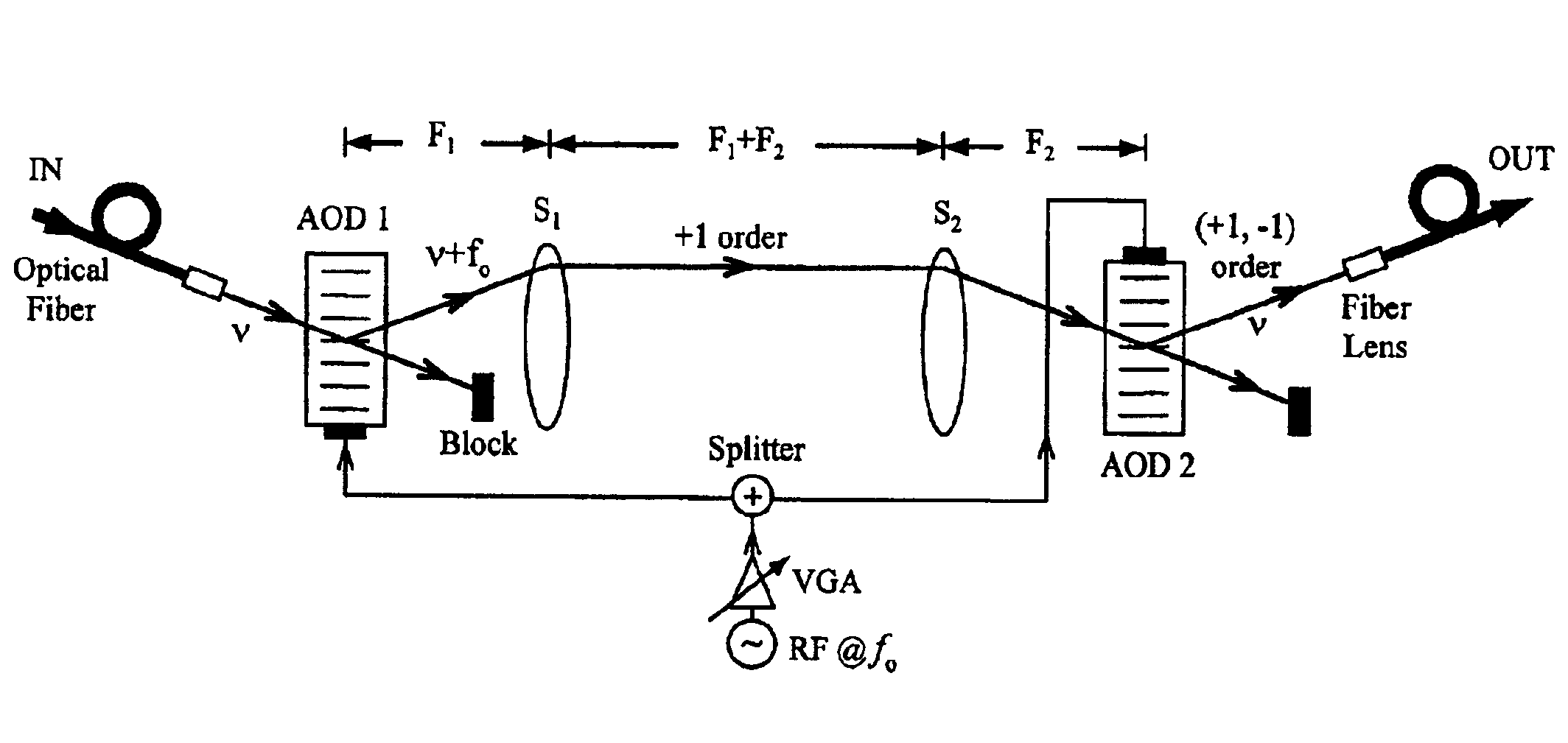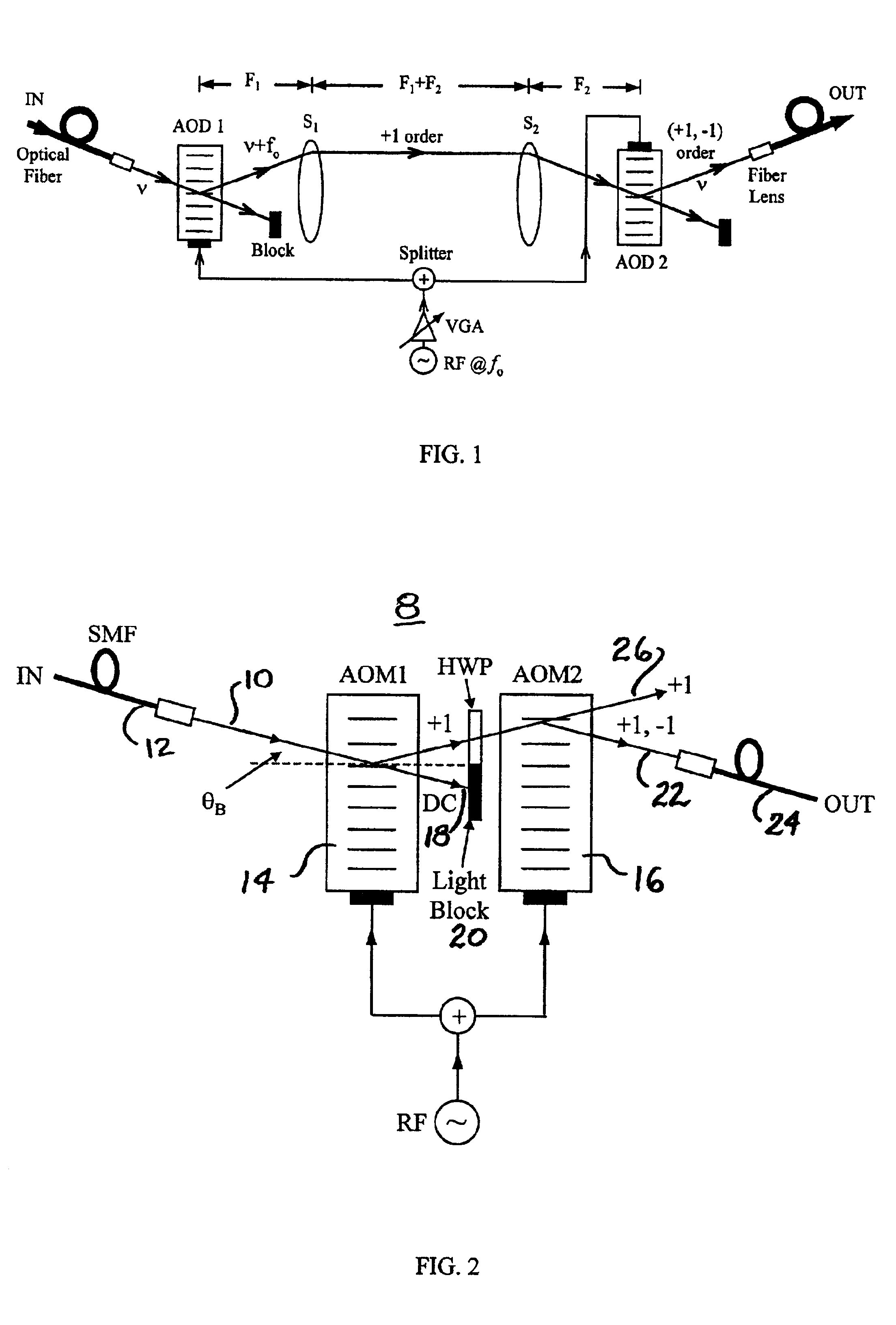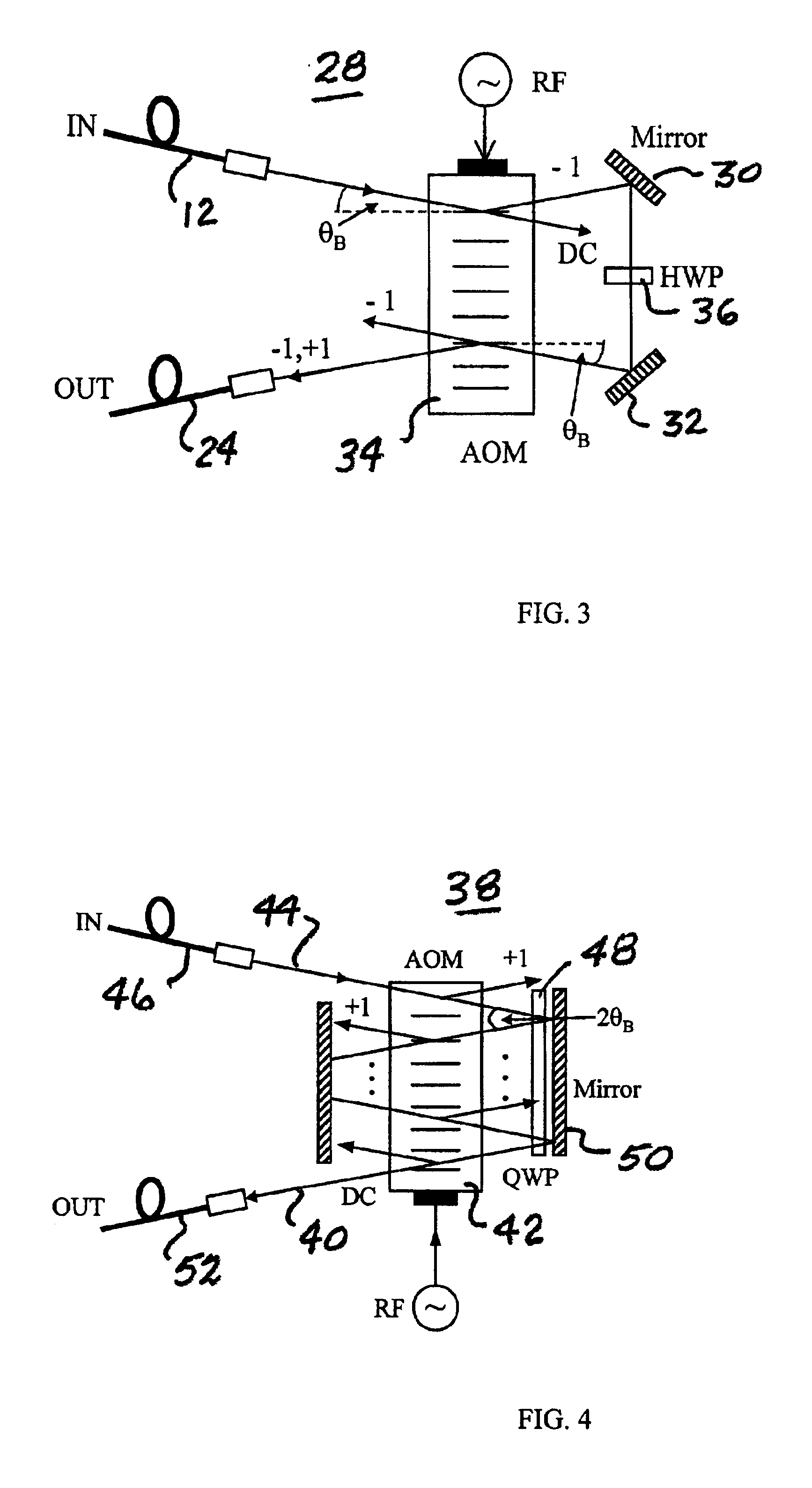High speed fiber-optic attenuation modules
a variable optical attenuator, high-speed technology, applied in the direction of optical elements, multiplex communication, instruments, etc., can solve the problems of low dynamic range, low optical amplifier efficiency, non-uniform gain, etc., to achieve high dynamic range, low loss, and high power handling
- Summary
- Abstract
- Description
- Claims
- Application Information
AI Technical Summary
Benefits of technology
Problems solved by technology
Method used
Image
Examples
Embodiment Construction
[0023]Optical attenuation via an AO device is controlled by varying the electrical drive power to the AO device that varies the AO device diffraction efficiency η. If two AO devices are used in cascade to form a doppler-free high dynamic range FO VOA as first proposed in N. A. Riza, “High speed fiber-optic switch,” U.S. Pat. No. 6,282,336, issued Aug. 28, 2001, and later in N. A. Riza and Z. Yaqoob, “High speed programmable optical attenuator,” SPIE Conf. Proc. Vol. 4046, Paper 10, April 26, Orlando, 2000, then essentially light undergoes a double diffraction effect leading to a η2 light efficiency control at the output of the module. This is the case when both AO devices are fed simultaneously by the same RF power and drive frequency. In dB or Decibel units, the squaring operation in diffraction efficiency leads to a multiply by two in dB, as dBs are a logarithmic to the base 10 scale. This refers to the doubling of the dynamic range and forms the basis for the present application ...
PUM
| Property | Measurement | Unit |
|---|---|---|
| incident angle | aaaaa | aaaaa |
| voltage | aaaaa | aaaaa |
| frequency | aaaaa | aaaaa |
Abstract
Description
Claims
Application Information
 Login to View More
Login to View More - R&D
- Intellectual Property
- Life Sciences
- Materials
- Tech Scout
- Unparalleled Data Quality
- Higher Quality Content
- 60% Fewer Hallucinations
Browse by: Latest US Patents, China's latest patents, Technical Efficacy Thesaurus, Application Domain, Technology Topic, Popular Technical Reports.
© 2025 PatSnap. All rights reserved.Legal|Privacy policy|Modern Slavery Act Transparency Statement|Sitemap|About US| Contact US: help@patsnap.com



